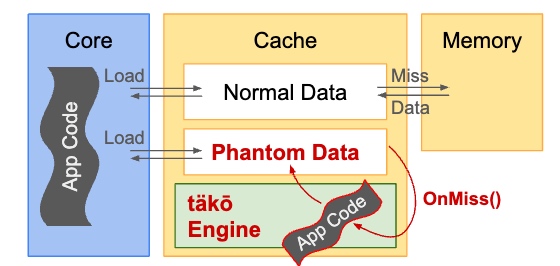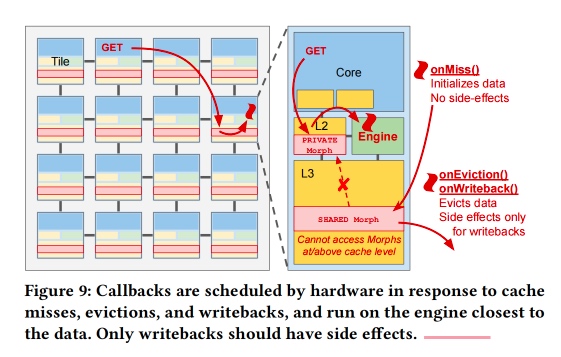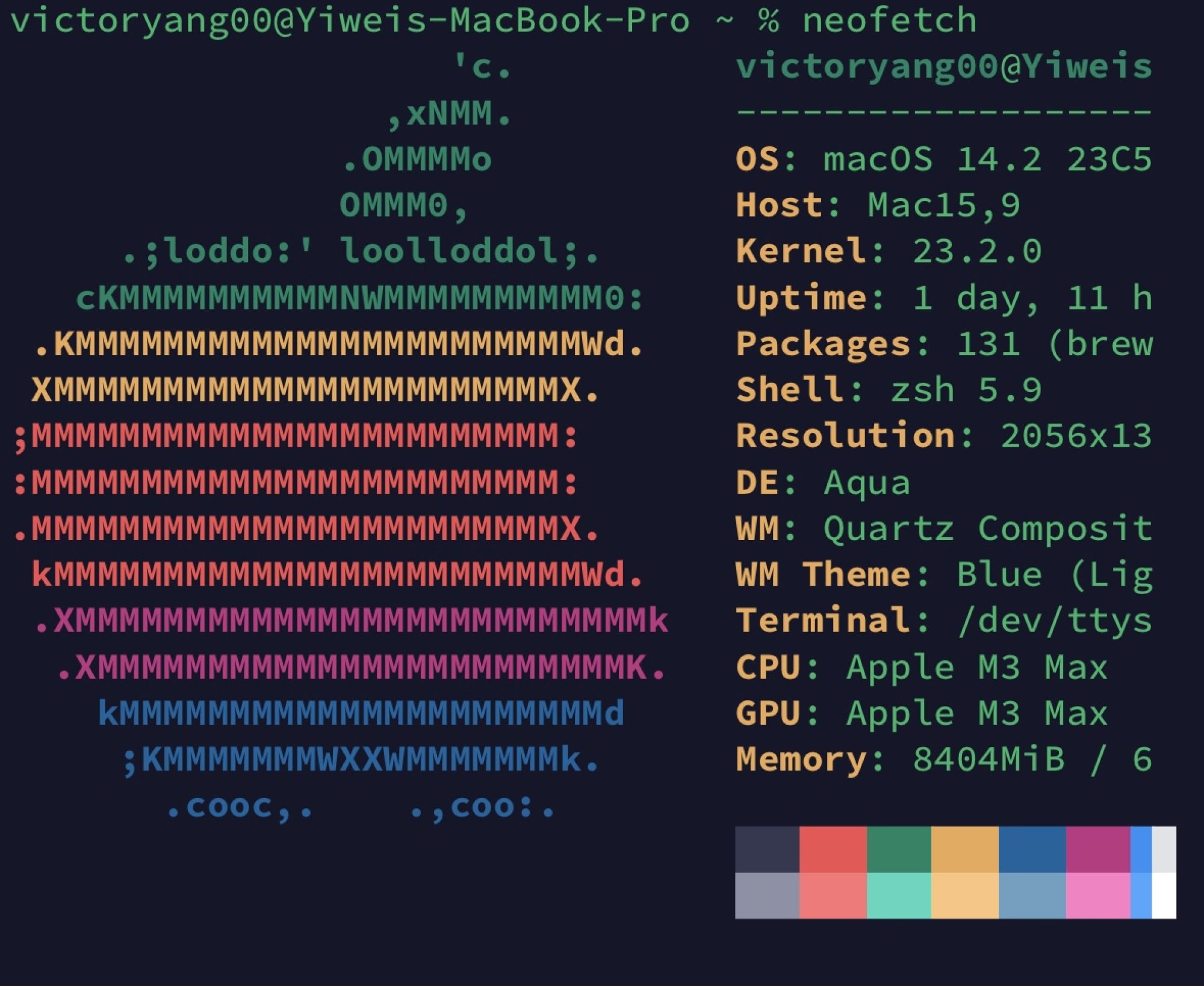文章目录[隐藏]

(Rust-like naming: phantom data(is used to label undeclared type.) Here used to get you the data at object level movement into software-defined data movement for different workloads.

They have a callback function for how it communicates with the dataflow fabric. The hardware scheduler allows the engine to invoke onMiss() onEviction() writeback(). They simply manifest each operation with SHARED and PRIVATE state changes and I don't think simply these three callbacks can make a memory order correct Morph.
In terms of power saving, my view of saving energy by using PIM or modified iMC means you don't need to communicate well between the core and the MC, while the dataflow-based analysis inside the iMC of NoC may intrinsically reduce traffic and thus can provide an energy-efficient solution.
However, this type of design fully exposes the memory to the attacker by speculation and row hammer, which will definitely give the user a black box if they want to make it commercially available.

